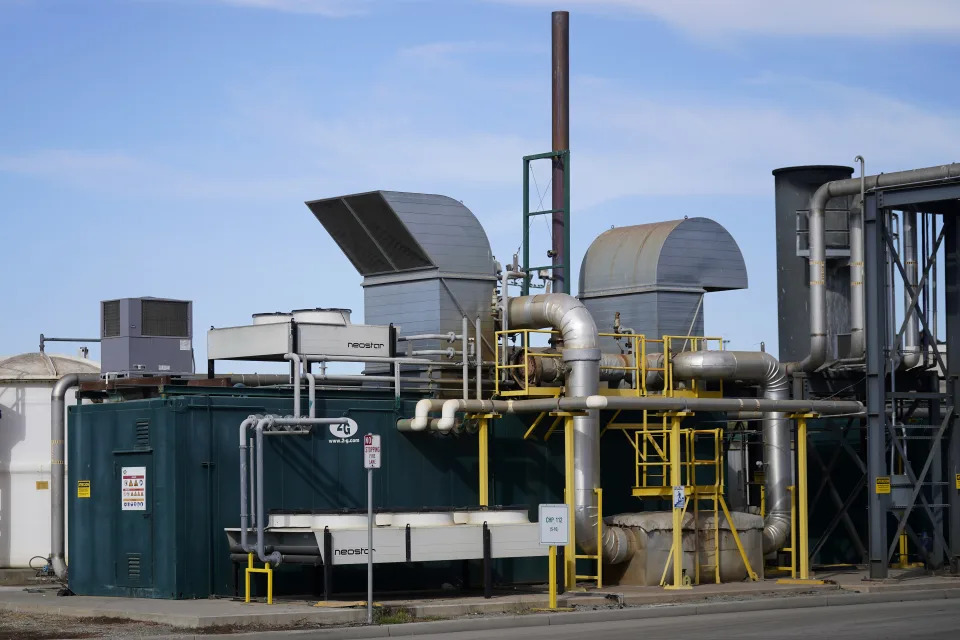The Fiscal Times
House GOP’s Israel Aid Plan Would Add Billions to Deficit: CBO
Yuval Rosenberg – November 1, 2023

House Speaker Mike Johnson’s plan to cut IRS funding to pay for the cost of a $14.3 billion aid package to Israel would add billions to the deficit over the next 10 years, according to a new estimate from the Congressional Budget Office.
The nonpartisan budget scorekeeper projected that rescinding more than $14 billion in IRS funding as the House GOP proposes to do would scale back the tax agency’s enforcement and consequently decrease revenues by $26.8 billion from 2024 through 2033. The revenue loss would far outweigh the spending cuts, resulting in a net increase in the deficit of $12.5 billion from the IRS portion of the plan — and the aid to Israel would bring the total cost of the bill to nearly $27 billion.
IRS Commissioner Danny Werfel said Tuesday that the cuts to his budget in the House bill would increase the deficit by far more, estimating it would add $90 billion over 10 years — a figure that The Washington Post reports is “based on IRS modeling that shows a 6-to-1 ratio of money spent on tax enforcement to revenue collected.”
House plan is DOA in the Senate: The CBO score was seen as a blow to the House plan, particularly given that if the new speaker had not included the IRS cuts, the aid for Israel would likely pass the House with strong bipartisan support, potentially jamming the Senate and lawmakers who favor packaging aid to Israel with more money to support Ukraine in its war against Russia.
Johnson dismissed the CBO estimate, telling reporters: “We don’t put much credence in what the CBO says.”
In truth, the CBO report is likely little more than a formality at this point since Johnson’s plan — if it can even pass the narrowly divided House — would be doomed in the Senate, where Democrats oppose the IRS funding cuts and are looking to combine aid to Israel with the Ukraine assistance and other emergency funding requested by President Joe Biden.
Senate Majority Leader Chuck Schumer on Wednesday called the House plan “totally unserious and woefully inadequate” and criticized its fiscal effects. “Here, the House is talking about needing a pay-for to reduce the deficit – and they put in a provision that actually increases the deficit. Why? Because they don’t want their super-rich, mega-wealthy friends to be audited by the IRS, like every other citizen is,” Schumer said. “So the House GOP proposal is not going to go anywhere. It’s dead before it even is voted on.”
Schumer urged Johnson to start over in a more bipartisan fashion, but the speaker reportedly told a gathering of Senate Republicans that military aid to Israel must move as a standalone bill because a larger package cannot pass with the support of the House Republican majority. Johnson reportedly also told the senators that he backs more aid to Ukraine but that it would need to be paired with reforms to border security. The speaker, relatively unknown to his Senate counterparts, reportedly also said that he’s focused on passing what he can through the House and would worry later about reconciling those bills with Senate versions.
With the November 17 deadline to avoid a government shutdown approaching, Johnson also said he will look to pass a stopgap spending bill that runs through mid-January rather than the mid-April timeframe he had previously said was also a possibility.
Biden threatens a veto: The White House has made clear that the House plan is unacceptable to President Joe Biden, who would veto it if it somehow lands on his desk.
In a lengthy and forceful statement issued Tuesday evening, the White House slammed the GOP plan as unnecessarily politicizing aid to Israel, excluding essential humanitarian assistance and failing to meet the urgent needs of the moment. “It inserts partisanship into support for Israel, making our ally a pawn in our politics, at a moment we must stand together. It denies humanitarian assistance to vulnerable populations around the world, including Palestinian civilians, which is a moral and strategic imperative. And by requiring offsets for this critical security assistance, it sets a new and dangerous precedent by conditioning assistance for Israel, further politicizing our support and treating one ally differently from others,” the White House said. “This bill is bad for Israel, for the Middle East region, and for our own national security.”
The bottom line: Even with the new CBO score, Johnson and House Republicans plan on passing their Israel aid bill on Friday, setting a confrontational tone for the series of budget battles that lie ahead — and making clear that they have priorities that take precedence over deficit reduction.











